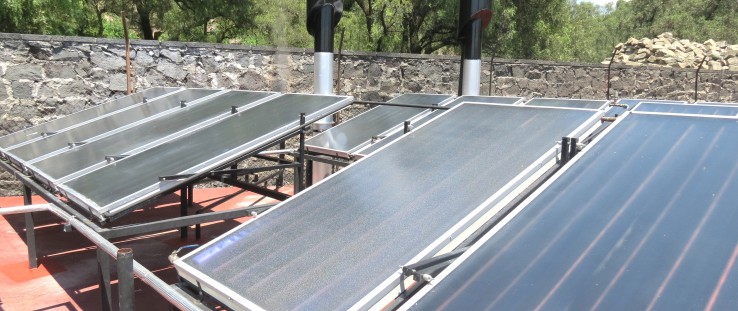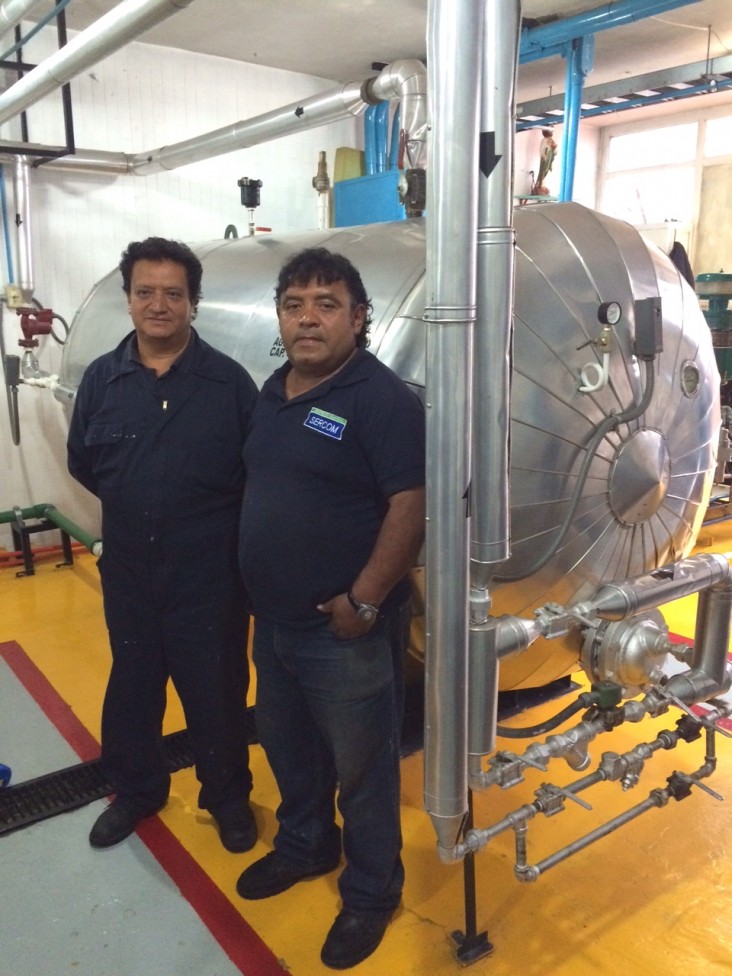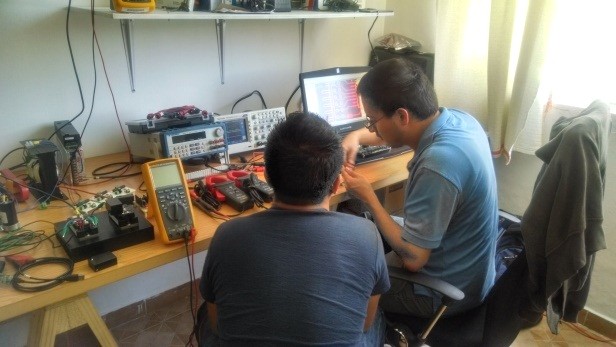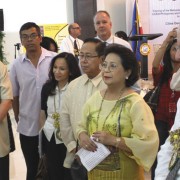 Solar water heater panels at the La Villa Pediatric Hospital
MLED
Solar water heater panels at the La Villa Pediatric Hospital
MLED
 Solar water heater panels at the La Villa Pediatric Hospital
MLED
Solar water heater panels at the La Villa Pediatric Hospital
MLED
For Dr. Luis Garrido Ramirez, director of the La Villa Pediatric Hospital in Mexico City, the benefits of his facility’s new solar-powered water heater are direct and tangible.
In the year since its installation in 2014, the heater has saved the hospital more than $11,000, a large sum for a small community hospital. And its rewards are not just financial; it saves almost 1,000 liters of diesel per month.
His enthusiasm for the new system goes beyond the direct savings. He is also proud of other less visible benefits. “The impact we have on the environment has been significantly reduced,” Garrido says.
The heater comes through the USAID-supported Mexico Low Emissions Development Program (MLED), a multifaceted project to support Mexico’s efforts to spur clean energy growth and reduce greenhouse gas emissions. The success demonstrated at the La Villa hospital encouraged Mexico’s Ministry of Health to announce it would install solar water heaters in seven additional hospitals around Mexico City.
“It is locally targeted efforts like this that ultimately help Mexico implement its national greenhouse gas emission reforms,” explains Donald McCubbin, USAID/Mexico’s environmental officer.
While Mexico produces less than 2 percent of global greenhouse gas emissions, even this seemingly tiny amount ranks the oil-dependent nation 13th in the world in terms of emissions. In recent years, Mexico has sought to reduce its dependence on oil and diversify its energy base by moving to clean energy sources. One motivator is energy diversity; another is environmental impacts, including the worst drought Mexico has experienced since records began 70 years ago.
It is in this context that Mexico has emerged as a leader in combatting climate change. In 2012, the country passed its General Law on Climate Change which, among other things, established greenhouse gas emissions reduction as a national priority. Mexico was also the second country in the world to set out a legal regulatory framework to address climate change.
In March 2015, Mexico became the first developing country to formally submit its international climate pledge to the U.N. body that oversees global climate talks, which are heading into a major session in Paris this December. Mexico’s plan aims to reduce greenhouse gases by 22 percent by the year 2030, an impressive goal for a country heavily dependent on its oil industry for energy.
Projects like Garrido’s solar water heater are considered good investments, which is reason enough for USAID to support these technologies. In the case of the solar water heater, which can cost as much as $30,000, a hospital can break even in less than four years. As a result, many hospitals in the country have already begun installing renewable-energy and energy-efficient upgrades.
The solar technology being used at the La Villa Pediatric Hospital is just one of many emission-curbing technologies benefiting Mexico, with support from USAID. Biodigesters are being installed to convert animal manure to electricity on local farms. Another project would recycle wheat straw, previously a trash byproduct of wheat production, into useful products.
These examples demonstrate that basic technological advances can reduce greenhouse gas emissions and at the same time directly benefit local Mexicans. The solar water heater and biodigester projects reduce energy costs, allowing more money to be invested back into the business. The wheat straw project will curb air pollution in agricultural communities if the straw is no longer burned.
Small Companies, Big Ideas
Perhaps the biggest beneficiaries of Mexico’s climate change plans are the innovators and entrepreneurs who are starting new businesses and creating new jobs for themselves using emission-curbing technologies. That is the story of LiCORE, originally a small firm comprised of five postgraduates with nothing but a dream to develop a smart transformer to store and distribute electricity produced from wind, solar and water energy.
LiCORE was the 2013 winner of USAID/Mexico’s annual competition to fund small, targeted and innovative clean energy technology projects for Mexican companies and entrepreneurs. Today, LiCORE is well-recognized among civil society associations, universities and research centers in Mexico.
“In 2015, we have attracted around 5 million pesos ($330,000) from other investors,” said LiCORE’s Alejandro Espinosa Calderon. According to Espinosa, smart transformers are the keystone to smart energy grids, an area of new technology gaining momentum internationally. Smart transformers could replace conventional transformers to integrate energy generated from renewable sources like solar panels, and will give the exact amount of energy required when it is needed, responding instantly to power quality problems.
With smart transformer technology, consumers will rely more on renewable forms of energy, and overall energy generation and greenhouse gases will be reduced as the transformers distribute electricity more efficiently.
With USAID support, LiCORE has almost completed its prototype of the smart transformer. LiCORE aims to have this technology on the market and available to both government and private sector customers in approximately five years. What once was a fledgling startup, is now an established company with 12 staffers developing technologies to reduce greenhouse gas emissions.
Nationally, as Mexico moves to prioritize lowering greenhouse gas emissions, the United States, through USAID, will continue to support its neighbor by investing in local projects, innovative technology, and governmental technical support.
“USAID’s investments in Mexico start in the communities. La Villa Pediatric Hospital is a great example of the impact that innovation and technology can have, when paired with policy reforms that help Mexico remain a leader focused on reducing national carbon output,” said USAID/Mexico Mission Director Sean Jones. “By supporting innovations in financing of new technologies and working with the government to implement national reforms, we’re helping to demonstrate a proven formula for success that can be replicated by others in Mexico.”














Comment
Make a general inquiry or suggest an improvement.